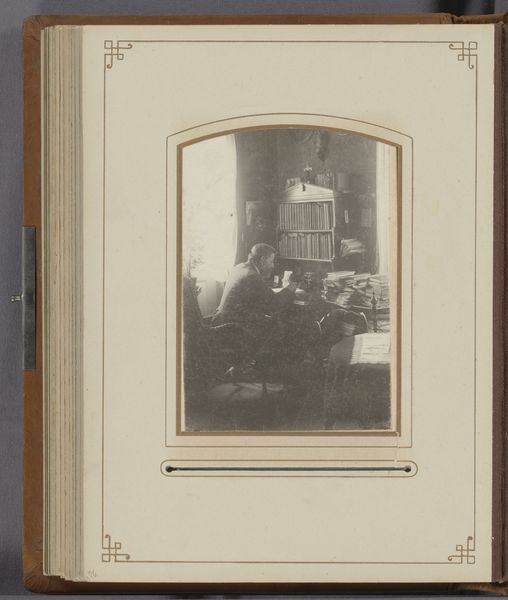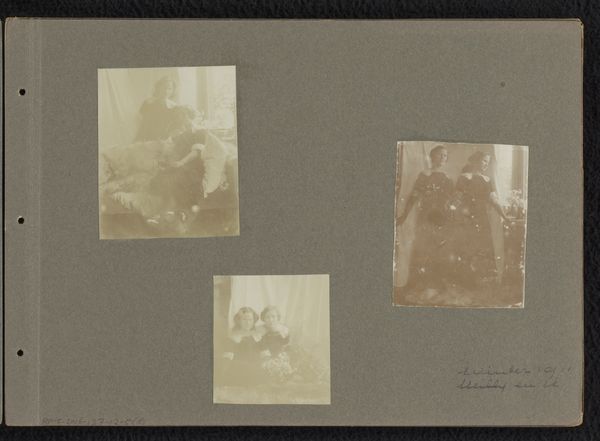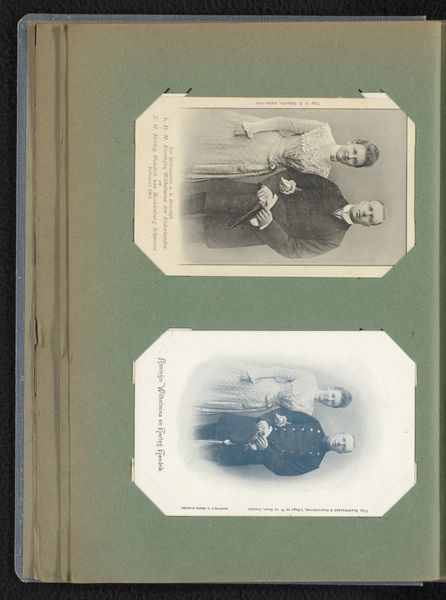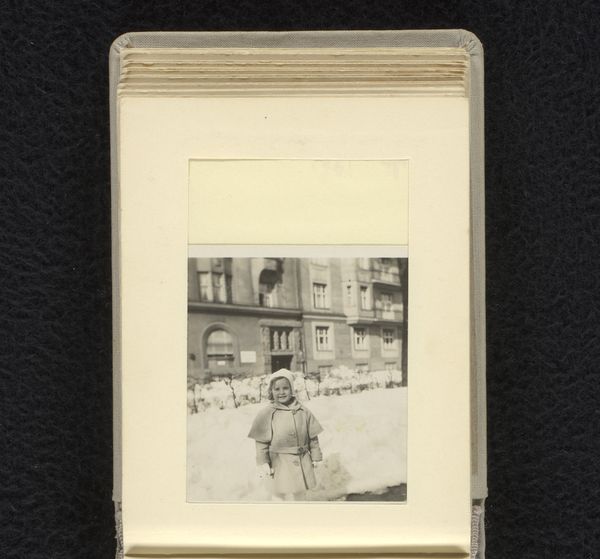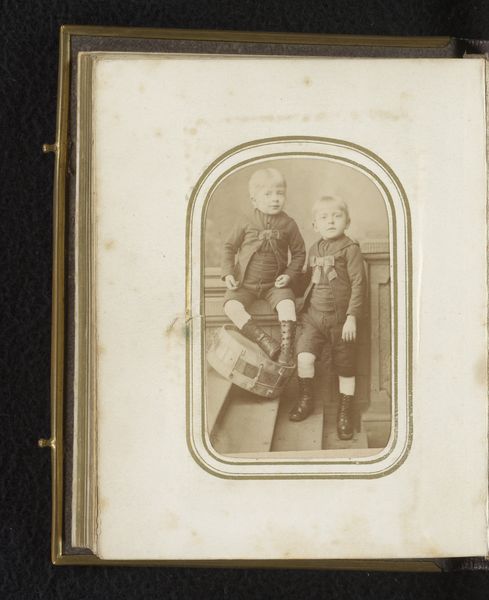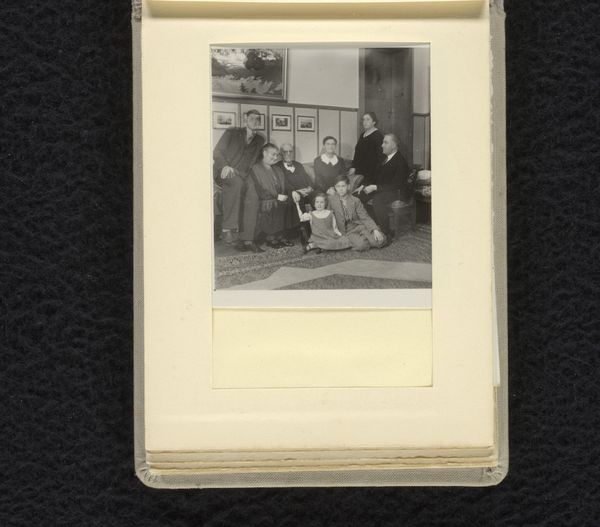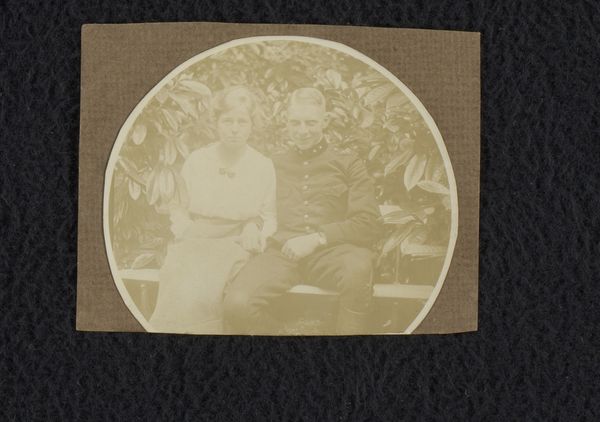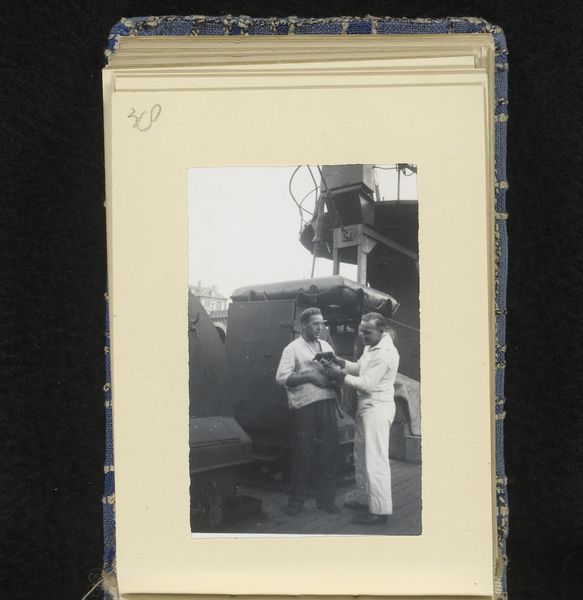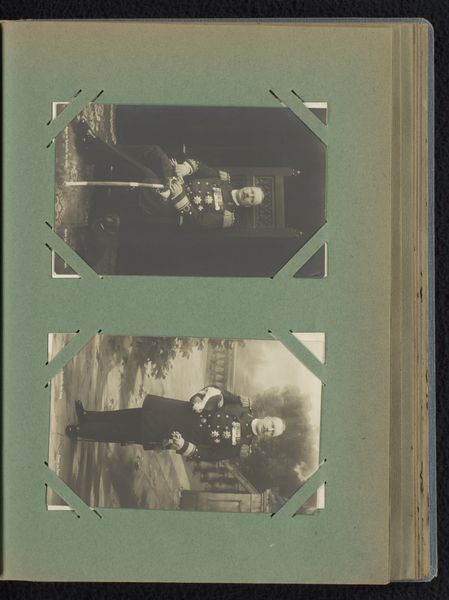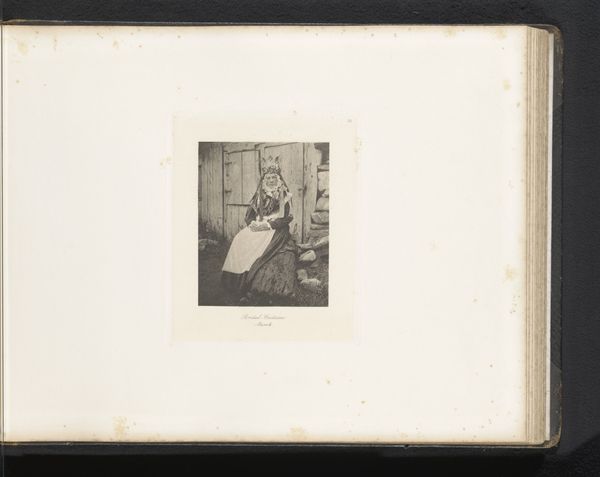
Isabel Wachenheimer op een bankje in de tuin met haar ouders Else Wachenheimer-Moos en Eugen Wachenheimer, 1941, Doorn Possibly 1941 - 1949
0:00
0:00
paper, photography
#
paper
#
photography
#
group-portraits
Dimensions: height 90 mm, width 40 mm, height 81 mm, width 107 mm
Copyright: Rijks Museum: Open Domain
Curator: This photograph, likely taken between 1941 and 1949, depicts Isabel Wachenheimer seated on a bench in a garden in Doorn with her parents, Else Wachenheimer-Moos and Eugen Wachenheimer. Editor: It's a strikingly composed image, especially the placement within what looks like a photo album page. The tight framing amplifies a sense of enclosure and formal restraint. Curator: Absolutely. Note how the geometry within the image emphasizes stability. The parents stand behind Isabel, forming a protective, almost architectural structure around her. The use of light and shadow—particularly the dappled light filtering through the foliage—adds depth and a touch of dynamism to the static pose. Editor: Yet, it's a poised record of family identity set against a backdrop charged with history. Family photos often operate as symbolic declarations against erasure. Knowing the era, what potential meanings might the garden setting hold? Gardens are commonly Edenic symbols of a world free from suffering, but how does it operate within a picture taken during war? Curator: A vital consideration! Gardens are spaces of cultivation and controlled nature. Here, does the contained domesticity signify resilience? Is it a claim to normalcy in a time of profound upheaval? Their somber expressions suggest anything but serenity. Editor: Their attire furthers this narrative; dark clothing exudes a subtle resistance. What message is subtly woven into this composition by the Wachenheimer family and preserved within a simple image, mounted so deliberately in its album? Curator: Perhaps the intent, regardless of precise meaning, transcends immediate documentation. This is a poignant study of familial bonds during an era defined by fractured connections and existential threats. The formal arrangement underscores a yearning for permanence and continuity amid transience. Editor: Yes, the album-page frame, in itself, underscores their family values, an archive built to be recovered by the future. By framing their lives in such a measured manner, the image suggests control as well as fragility. It certainly causes the viewer to think deeply about both what we see and what remains unsaid.
Comments
No comments
Be the first to comment and join the conversation on the ultimate creative platform.

